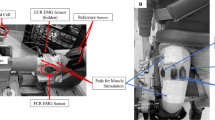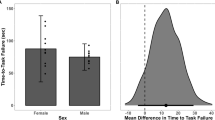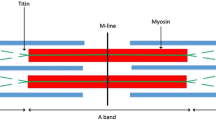Summary
The active components of the quadrupedal diagonal stance response to rapid removal of the support from beneath a single limb were studied in cats to further define the mechanisms that trigger and generate the response. We recorded EMG activity from lateral gastrocnemius and tibialis anterior muscles in awake, behaving cats while they stood on an hydraulic posture platform. By dropping the support from beneath a single limb, we evoked the diagonal stance response, with its characteristic changes in vertical force and EMG patterns. As the animal responded to this drop, a second perturbation of posture was then presented at intervals of 10 to 100 ms following the first. This second perturbation, which consisted of dropping the support from beneath the two limbs that were loaded as a result of the initial limb drop, made the first response biomechanically inappropriate. The EMG responses observed in both muscles during paired perturbations were triggered by the somatosensory events related to the perturbations. Muscle responses that were appropriate for the first perturbation always occurred with amplitudes and latencies similar to control trials. This was true even when the second perturbation occurred 10–20 ms after the first, that is, when this perturbation either preceded or was coincident with the response to the initial limb drop. The EMG responses that were normally associated with the second perturbation were delayed and/or reduced in amplitude when the time interval between perturbations was short. As the inter-perturbation interval was lengthened beyond 60–100 ms, however, EMG responses to the second perturbation were unaffected by the occurrence of the first perturbation. When the hindlimb containing the recording electrodes was dropped as part of the second perturbation, a myotatic latency response was observed in tibialis anterior. The amplitude of this response to the second perturbation was greater than controls when this displacement was presented during the period between initiation of the first perturbation and execution of the response to it. When the second displacement was presented after execution of the first response began, the amplitude of the myotatic response was reduced below control levels. While the results do not preclude the possibility that these “automatic” postural responses are segmental or suprasegmental reflexes, they support the hypothesis that the active component of the response to drop of the support beneath a single limb is centrally programmed and that the appropriate response can be riggered very rapidly by the somatosensory information signalling the perturbation.
Similar content being viewed by others
References
Angel RW (1968) Unloading reflex in patients with hemiparesis. Neurology 18: 497–503
Angel RW, Eppler W, Iannone A (1965) Silent period produced by unloading of muscle during voluntary contraction. J Physiol (Lond) 180: 864–870
Angel RW, Goldstein M (1983) Abnormal unloading reflex in a patient with infarction of the medial lemniscus. Ann Neurol 13: 279–284
Alston W, Angel RW, Fink FS, Hofmann WW (1967) Motor activity following the silent period in human muscle. J Physiol (Lond) 190: 189–202
Cooke JD, Eastman MJ (1977) Long-loop reflexes in the tranquilized monkey. Exp Brain Res 27: 491–500
Coulmance M, Gahéry Y, Massion J, Swett JE (1979) The placing reaction in the standing cat. A model for the study of posture and movement. Exp Brain Res 37: 265–281
Dufosse' M, Macpherson J, Massion J (1982) Biomechanical and electromyographic comparison of two postural supporting mechanisms in the cat. Exp Brain Res 45: 38–44
Dufosse' M, Macpherson J, Massion J, Sybirska E (1985) The postural reaction to the drop of a hindlimb support in the standing cat remains following sensorimotor cortical ablation. Neurosci Lett 55: 297–303
English AW, Letbetter WD (1982) A histochemical analysis of identified compartments in cat lateral gastrocnemius muscle. Anat Rec 204: 123–130
Gahéry Y, Nieoullon A (1978) Postural and kinetic coordination following cortical stimuli which induce flexion movements in the cat's limbs. Brain Res 149: 25–37
Ghez C, Shinoda Y (1978) Spinal mechanisms of the functional stretch reflex. Exp Brain Res 32: 55–68
Ioffe ME, Andreyev AE (1969) Interextremity coordination in local motor conditioned reactions of dogs. (Rus) Zh Vyssh Nerv Deyat 19: 557–565
Macpherson JM, Rushmer DS, Dunbar DC (1986) Postural responses in the cat to unexpected rotations of the supporting surface: evidence for a centrally generated synergic organization. Exp Brain Res 63: 152–160
Rushmer DS, Macpherson JM, Dunbar DC, Russell CJ, Windus SL (1987) Automatic postural responses in the cat: responses of proximal and distal hindlimb muscles to drop of support of a single hindor forelimb. Exp Brain Res 65: 527–537
Simoyama M, Tanaka R (1974) Reciprocal Ia inhibition at the onset of voluntary movements in man. Brain Res 82: 334–337
Tanaka R (1974) Reciprocal Ia inhibition during voluntary movements in man. Exp Brain Res 21: 529–540
Woollacott MJ, Nashner LM (1982) Inhibition of the achilles tendon reflex by antagonist long-latency postural responses in humans. Exp Neurol 75: 420–439
Author information
Authors and Affiliations
Additional information
Supported by NIH grants NS19484 and RR05593 as well as the Medical Research Foundation of Oregon, and the Neurological Sciences Center of Good Samaritan Hospital and Medical Center
Rights and permissions
About this article
Cite this article
Rushmer, D.S., Dunbar, D.C., Russell, C.J. et al. Automatic postural responses in the cat: responses of distal hindlimb muscles to paired vertical perturbations of stance. Exp Brain Res 68, 477–490 (1987). https://doi.org/10.1007/BF00249792
Received:
Accepted:
Issue Date:
DOI: https://doi.org/10.1007/BF00249792




